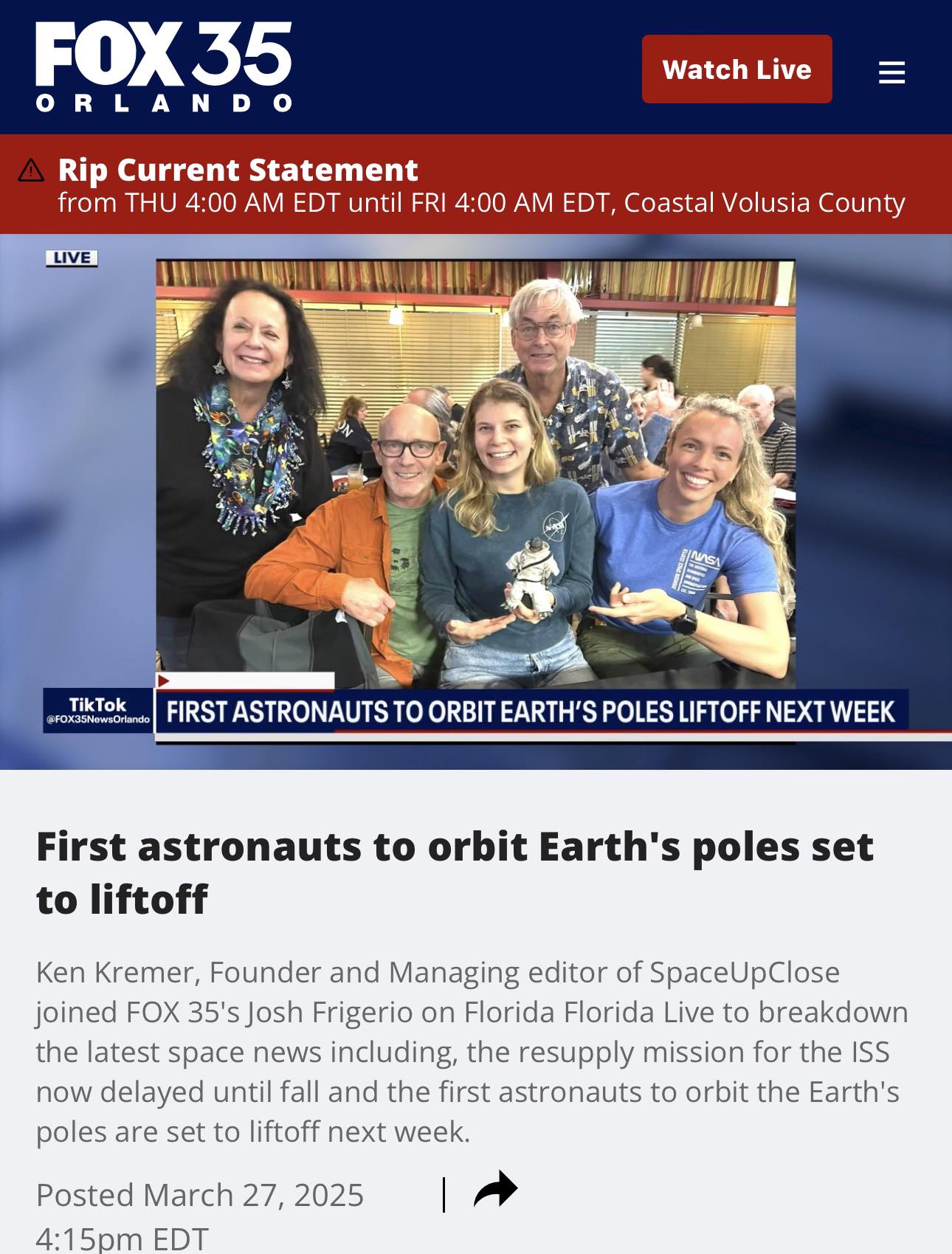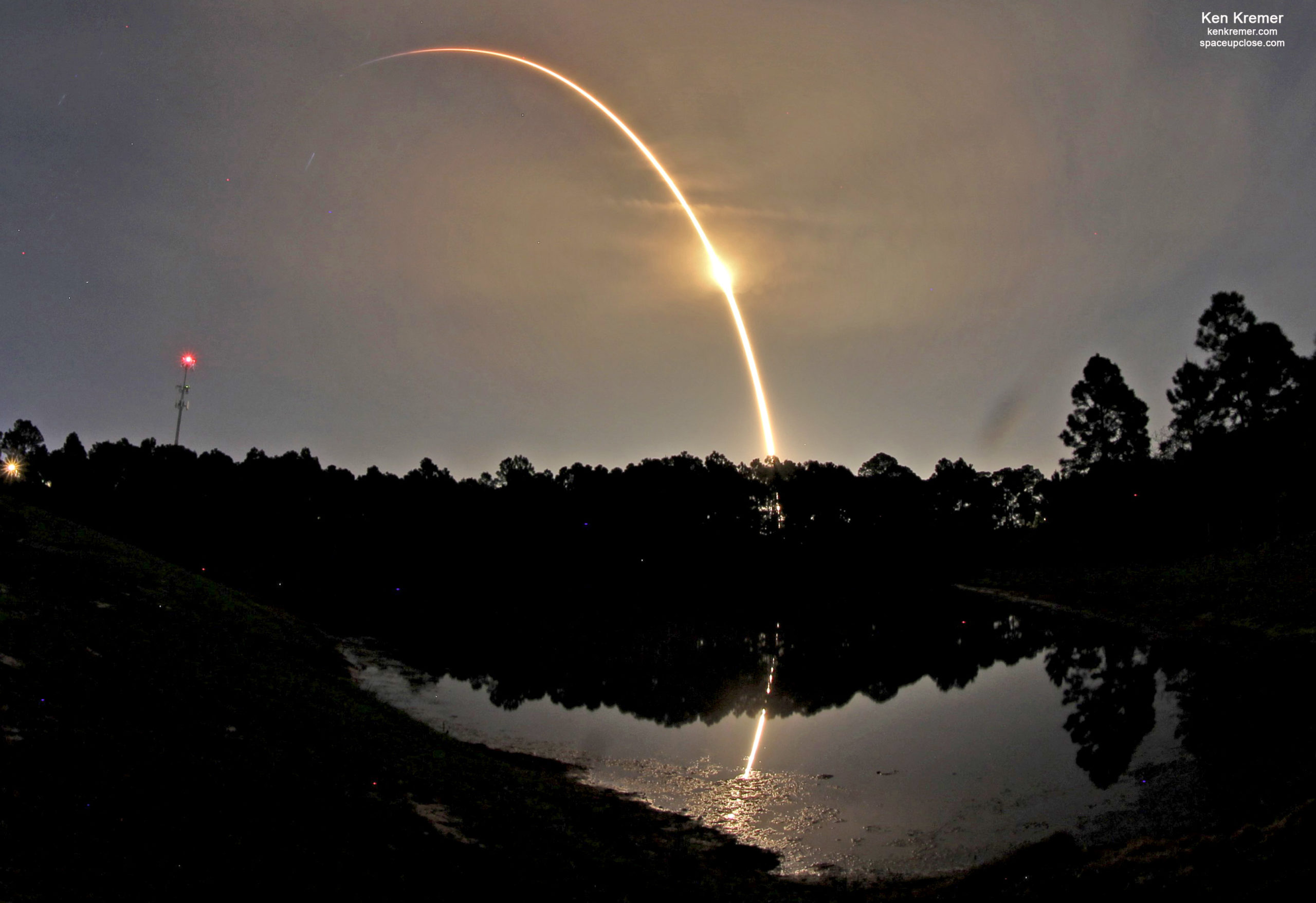
For SpaceUpClose.com & RocketSTEMTITUSVILLE, FL – A spectacular middle of the night blastoff of a six time recycled SpaceX Falcon 9 rocket with mostly clear skies successfully delivered the next batch of Starlink broadband internet satellites to orbit early this morning, March 24 – marking the 4th Falcon 9 launch this month of 60 Starlinks each from the Florida Space Coast
Thus the Starlink constellation now nears 1400 !
The flawless liftoff of the SpaceX Falcon 9 into nearly cloud free skies took place right on time at 4:28 a.m. EDT (828 GMT) Wednesday, March 24 from Space Launch Complex 40 (SLC-40) at Cape Canaveral Space Force Station in Florida in darkness carrying another set of 60 Starlink satellites to low earth orbit during an instantaneous launch window.
Some eight and a half minutes after liftoff the reused 15 story tall first stage stuck the landing on the “Of Course I Still Love You” (OCISLY) droneship. OCISLY was prepositioned in the Atlantic Ocean off the coast of the Carolina’s some 400 miles (640 km) northeast of the launch site.
We could easily hear the very loud sleep awakening window shaking crackling roar from 15 miles away at a first time location in Titusville, to get a completely different perspective.

The Starlink mission also launched on the 15th anniversary of their very first and unsuccessful launch by SpaceX of their ill-fated Falcon 1 rocket on March 24, 2006 which failed seconds after liftoff – SpaceX commentators mentioned on their live launch webcast.
SpaceX has moved forward in leaps and bounds since that day and is now at the forefront of space innovation and rocket recovery and recycling as this six-time launched and landed 1st stage exemplifies.
This morning’s liftoff used the flight-proven 1st stage booster B1060.6 which has now flown to space and back 6 times and sets up the prospect for a 7th flight in the not too distant future.
The 229-foot-tall (70-meter) Falcon 9 flew into clear and star filled night skies and successfully delivered the twenty third Starlink internet satellite mission with five dozen Starlinks encapsulated inside the recycled nose cone to low Earth orbit (LEO) from Florida’s Spaceport.
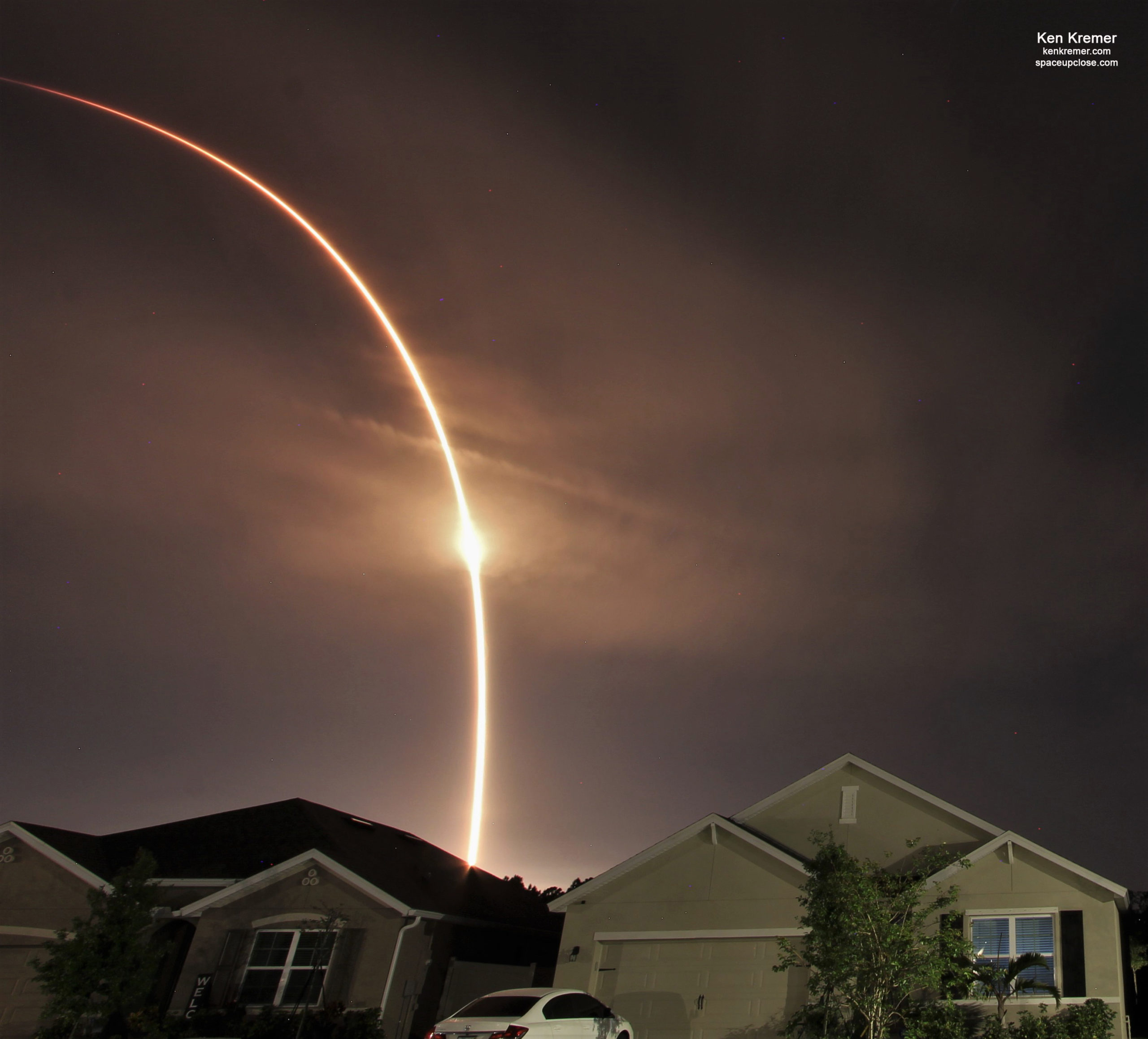
All 9 Merlin 1D first stage engines ignited to generate approx. 1.7 million pounds of liftoff thrust fueled with liquid oxygen and RP-1 propellants that began propellant loading at T Minus 35 minutes.
The two-stage Falcon 9 rocket launched on a northeasterly trajectory from Cape Canaveral targeted to deliver the 60 Starlinks to an initial transfer orbit of 175 miles (283 kilometers) in altitude.
This 23rd Starlink mission is officially designated as V 1 L22.
Enjoy our eyewitness launch photos at Space UpClose from Ken Kremer.
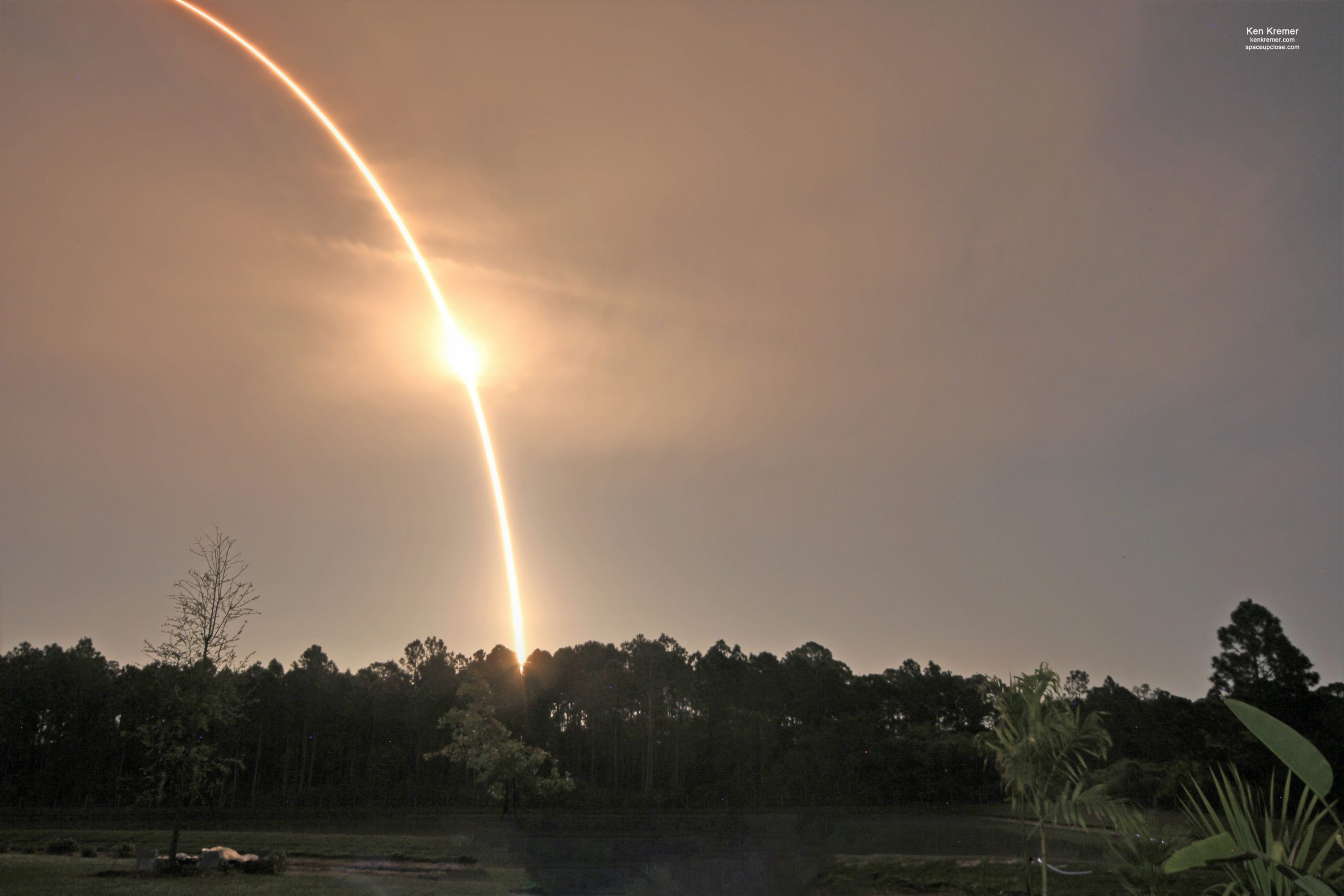
The Falcon 9 first stage rocket booster B1060 supporting this mission previously supported launch of the GPS-III Space Vehicle 03 and Turksat 5A missions in addition to three Starlink missions. Check out our earlier articles and photos.
Thus B1060 has successfully launched and landed and been recycled six times since June 2020.
Following stage separation, SpaceX successfully landed Falcon 9’s first stage on the “Of Course I Still Love You” droneship located in the Atlantic Ocean.
Falcon 9’s first stage has landed on the Of Course I Still Love You droneship
— SpaceX (@SpaceX) March 24, 2021

Overall B1060.6 marked the 78th Falcon 9 1st stage landing by sea or land since 2015.
This SpaceX graphic shows the launch and landing sequence of events:
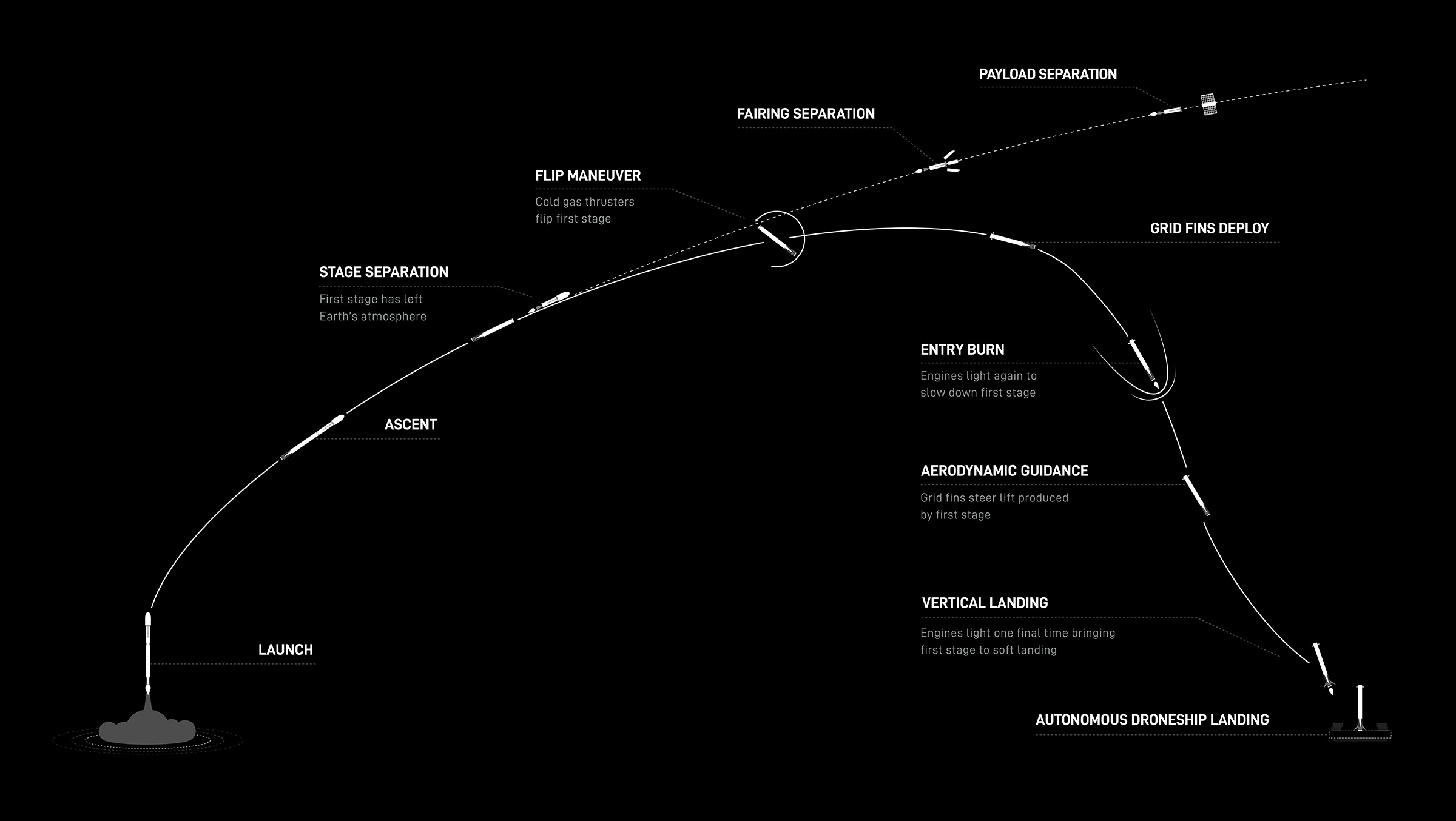
SpaceX also recycles the payload fairing halves after they are recovered as sea as well.
One half of Falcon 9’s fairing supported the Sentinel-6A mission and the other supported a previous Starlink mission.
A new fairing recovery vessel new Shelia Bordelon has been deployed to attempt to hoist the fairings out from the ocean post splashdown
Apparently, the twin fairing catcher ships are not being deployed and their fate is unknown. The riggings and communication gear are being dismantled from GO MS CHGIEF and GO MS TREE at Port Canaveral
The recovered 1st stage booster B1060.6 on OCISLY will return to Port Canaveral in a few days – as well as the fairings if they were recovered.
The 60 Starlink were deployed as planned all at once about 1 hour and three minutes after liftoff
Watch this Starlink deployment video tweeted by SpaceX:
Deployment of 60 Starlink satellites confirmed pic.twitter.com/Xcbrq66Mez
— SpaceX (@SpaceX) March 24, 2021
The Starlinks will now raise their orbits via the krypton ion thrusters to an altitude of 341 miles (550 kilometers).
Following this latest 23rd batch that brings the total number of Starlink satellites launched to 1,385 internet satellites. That includes earlier prototypes mostly from the first launch as well as the 10 Starlink sats launched to polar orbit on the last Falcon 9 launch on Transporter-1 mission on Jan. 24. Check out our story and photos.
The actual number of Starlink satellites is estimated to be at least 60 less due to some earlier versions being intentionally deorbited due to malfunctions or other reasons
Astronomer Jonathan McDowell keeps a running tally of Starlink at this page
https://planet4589.org/space/stats/megacon/starbad.html
The 500 pound flat panel Starlink satellites are being mass produced and manufactured by SpaceX in Redmond, Washington.
“We’re currently building roughly six satellites a day at our factory in Seattle, which is pretty remarkable,” Jonathan Hofeller, SpaceX vice president for Starlink, said at Spacetide, a Japanese space business conference, held online March 23. “He said the company has maintained that production rate for about a year so far,” according to a Space News story.
The new mission thus fortifies the Starlink constellation of relay satellites that one day upcoming will offer a competitive alternative to existing broadband services across North America – including the US and Canada
And now its expanding!
The Starlink team is excited to launch service in Germany and New Zealand for the first time, and expand its existing service in the UK, says SpaceX.
Learn more about our international coverage on our webcast, or visit starlink.com to see if Starlink is available in your area.
Initial Starlink service is priced at $99 a month.
The Starlink Starter kit sells for $499 upfront cost to order.
All 3 Falcon 9s each delivered 60 SpaceX Starlink broadband internet satellites to Low Earth Orbit (LEO) for a grand total of 180 couch-sized Starlinks to space in barely 10 days’ time from Florida’s busy Spaceport.
This was the 4th Falcon 9 to liftoff in March following three earlier ones on March 4, 11 and 14- see earlier our stories and photos.
To date SpaceX has launched nine Falcon 9 rockets in 2021.
Recycling the 1st stage boosters many times has enabled SpaceX to maintain a rapid launch cadence of nearly 3 launches per month last year and even more planned this year.
Watch this SpaceX tweeted liftoff video:
Liftoff! pic.twitter.com/ZUdPgagG7R
— SpaceX (@SpaceX) March 24, 2021
The next Starlink launch is NET late April
Watch Ken’s continuing reports about Starlink, Mars 2020 Perseverance and Curiosity rovers, Artemis and NASA missions, SpaceX, Commercial Crew Starliner and Crew Dragon and onsite for live reporting of upcoming and recent SpaceX and ULA launches including Crew 1 & 2, Demo-2, ISS, X-37B, Solar Orbiter, NRO spysats and national security missions and more at the Kennedy Space Center and Cape Canaveral Space Force Station.
Stay tuned here for Ken’s continuing Earth and Planetary science and human spaceflight news: www.kenkremer.com –www.spaceupclose.com – twitter @ken_kremer – email: ken at kenkremer.com
Dr. Kremer is a research scientist and journalist based in the KSC area, active in outreach and interviewed regularly on TV and radio about space topics.
………….
Ken’s photos are for sale and he is available for lectures and outreach events
Please consider supporting Ken’s work by donating at Patreon:
https://www.patreon.com/kenkremer
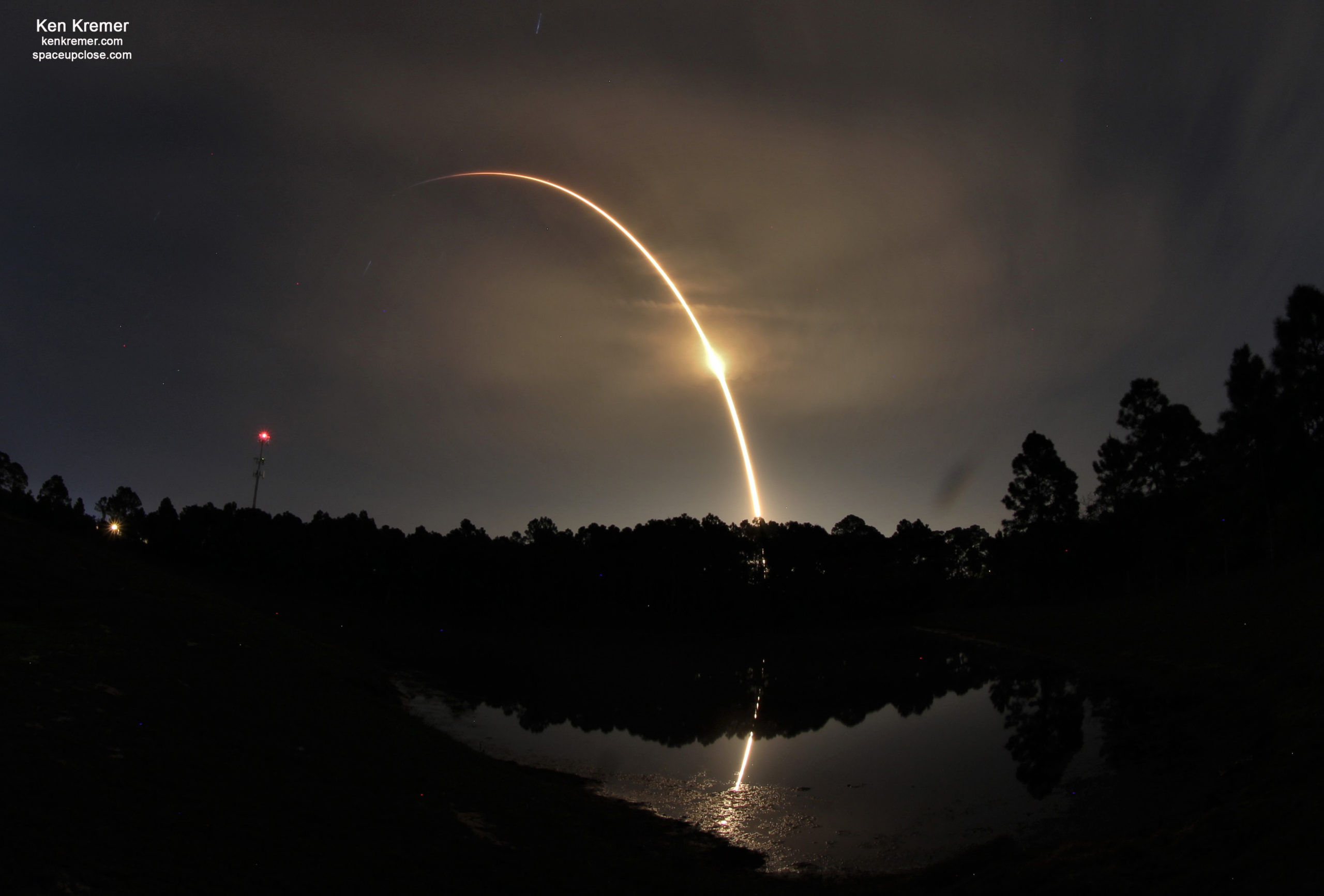
x


